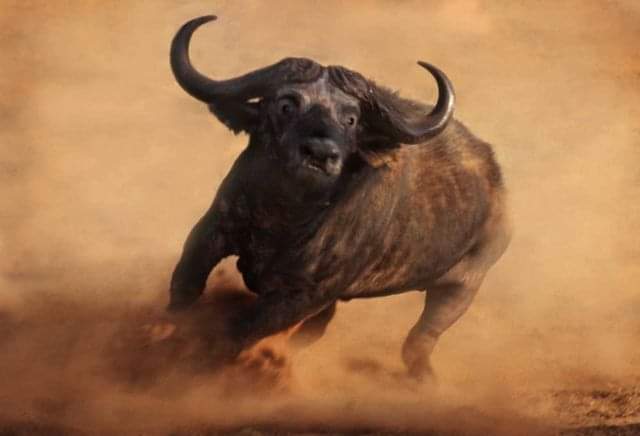
As the Cape buffalo bull matures, the base of his horns moves closer until they only harden 8-9 years-old, they fuse together and form one big plate of armour under their skin (continuous bone). This protects the skull from damage during their powerful fights. This shield is called a ‘boss’ (only the bulls have this)
The Cape buffalo does not have many things it has to worry about. Lion and lionesses are most often the only predator they have to avoid. Like all cats, these cats have good acceleration, but poor stamina and cannot chase for long. Concealment (hiding) and stalk are the very important part of their hunt. They use vegetation as cover, but also use ravines and gullies to hide. Watering holes are their favourite place to hunt.
But… Their best time to hunt and cover, is darkness, lions and lionesses prefer to hunt at night, especially when there is no moon, or moon covered by night. They need little light and have fantastic night vision.
Cape buffalo are not just your normal herd — they work together. When they rest and chew their cud — like cattle, these great animals lie down in a circular pattern and face outwards — ready for danger.
Some Cape buffalo climb high altitudes — over 9, 000 feet, on the slopes of Mount Kenya just to dig out iron-rich clay with their horns.
This is among the “big five” in terms of hunting in the wild. The other four are Leopards, Rhinoceros, Elephants and Lions. Their main predators are humans since they are hunted for bush meat and trophies. Habitat loss, caused by humans also greatly affects all of them, and most other wildlife.
These herbivores feed more quickly than any African herbivore with the aid of its long tongue and a row of sharp incisors.

